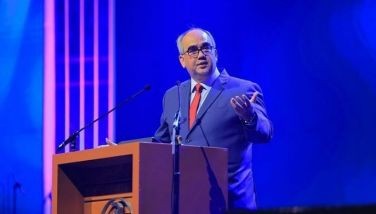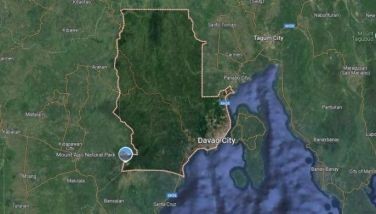Mindanao meat industry poised to join world mart
July 7, 2001 | 12:00am
DAVAO CITY – It is final and uncontestable. The Office Internationale des Epizootes (OIE) has officially declared Mindanao a foot-and-mouth disease (FMD) free zone, enabling livestock growers here to compete in the world market.
The OIE is a Paris-based private international organization that monitors the incidence of animal diseases worldwide. It is recognized by the World Trade Organization (WTO), of which the Philippines is a member, to inform governments of the occurrence and cause of animal diseases throughout the world, and of ways to control the diseases.
On May 30, after nearly 20 years of keeping the region free from contamination of the highly contagious livestock disease, Mindanao finally received a certification allowing it to export meat products.
"The certification is both a boon and a challenge for Mindanao’s livestock industry," enthused Mindanao Business Council (MBC) chairperson Joji Ilagan Bian.
Mindanao, she said, is a major livestock producer of the country. Annually, it contributes an average share of 33 percent, 31 percent and 29 percent to the national carabao, cattle and swine production, respectively.
When the FMD virus hit the country in 1999, only Mindanao was spared from its ravaging effects. The disease inflicted blisters on the mouth and feet of pigs, cattle, goats and sheep.
The outbreak prompted the Mindanao business community to join hands and conduct a massive and aggressive advocacy to strengthen the region’s quarantine, monitoring and surveillance capabilities to prevent the entry and spread of FMD in the island.
The collective effort culminated in a resolution during the Eighth Mindanao Business conference urging the government to "take immediate action in ensuring that the animal quarantine system in Mindanao is strengthened, including its capabilities to conduct monitoring, surveillance and mitigating activities to ensure that FMD is prevented from invading and creating havoc in the region."
The resolution further pushed for "ensuring the international declaration of Mindanao as a FMD-free area. Barely two years later, Mindanao has indeed achieved what it aimed for-our international recognition as an FMD-free zone, with our livestock producers enabled to compete in the global market," said Bian.
Meanwhile, the Visayas group of islands and Palawan are following Mindanao’s footsteps. They already signified to OIE intent to apply for an internationally certification but had to wait for October for formal application.
October this year marks the two consecutive years after which the two regions (Visayas and Palawan) have not suffered any case of the disease. Visayas, particularly Iloilo, last suffered an FMD outbreak in September and October of 1999.
The OIE is a Paris-based private international organization that monitors the incidence of animal diseases worldwide. It is recognized by the World Trade Organization (WTO), of which the Philippines is a member, to inform governments of the occurrence and cause of animal diseases throughout the world, and of ways to control the diseases.
On May 30, after nearly 20 years of keeping the region free from contamination of the highly contagious livestock disease, Mindanao finally received a certification allowing it to export meat products.
"The certification is both a boon and a challenge for Mindanao’s livestock industry," enthused Mindanao Business Council (MBC) chairperson Joji Ilagan Bian.
Mindanao, she said, is a major livestock producer of the country. Annually, it contributes an average share of 33 percent, 31 percent and 29 percent to the national carabao, cattle and swine production, respectively.
When the FMD virus hit the country in 1999, only Mindanao was spared from its ravaging effects. The disease inflicted blisters on the mouth and feet of pigs, cattle, goats and sheep.
The outbreak prompted the Mindanao business community to join hands and conduct a massive and aggressive advocacy to strengthen the region’s quarantine, monitoring and surveillance capabilities to prevent the entry and spread of FMD in the island.
The collective effort culminated in a resolution during the Eighth Mindanao Business conference urging the government to "take immediate action in ensuring that the animal quarantine system in Mindanao is strengthened, including its capabilities to conduct monitoring, surveillance and mitigating activities to ensure that FMD is prevented from invading and creating havoc in the region."
The resolution further pushed for "ensuring the international declaration of Mindanao as a FMD-free area. Barely two years later, Mindanao has indeed achieved what it aimed for-our international recognition as an FMD-free zone, with our livestock producers enabled to compete in the global market," said Bian.
Meanwhile, the Visayas group of islands and Palawan are following Mindanao’s footsteps. They already signified to OIE intent to apply for an internationally certification but had to wait for October for formal application.
October this year marks the two consecutive years after which the two regions (Visayas and Palawan) have not suffered any case of the disease. Visayas, particularly Iloilo, last suffered an FMD outbreak in September and October of 1999.
BrandSpace Articles
<
>
- Latest
- Trending
Trending
Latest
Trending
Latest
Recommended





























